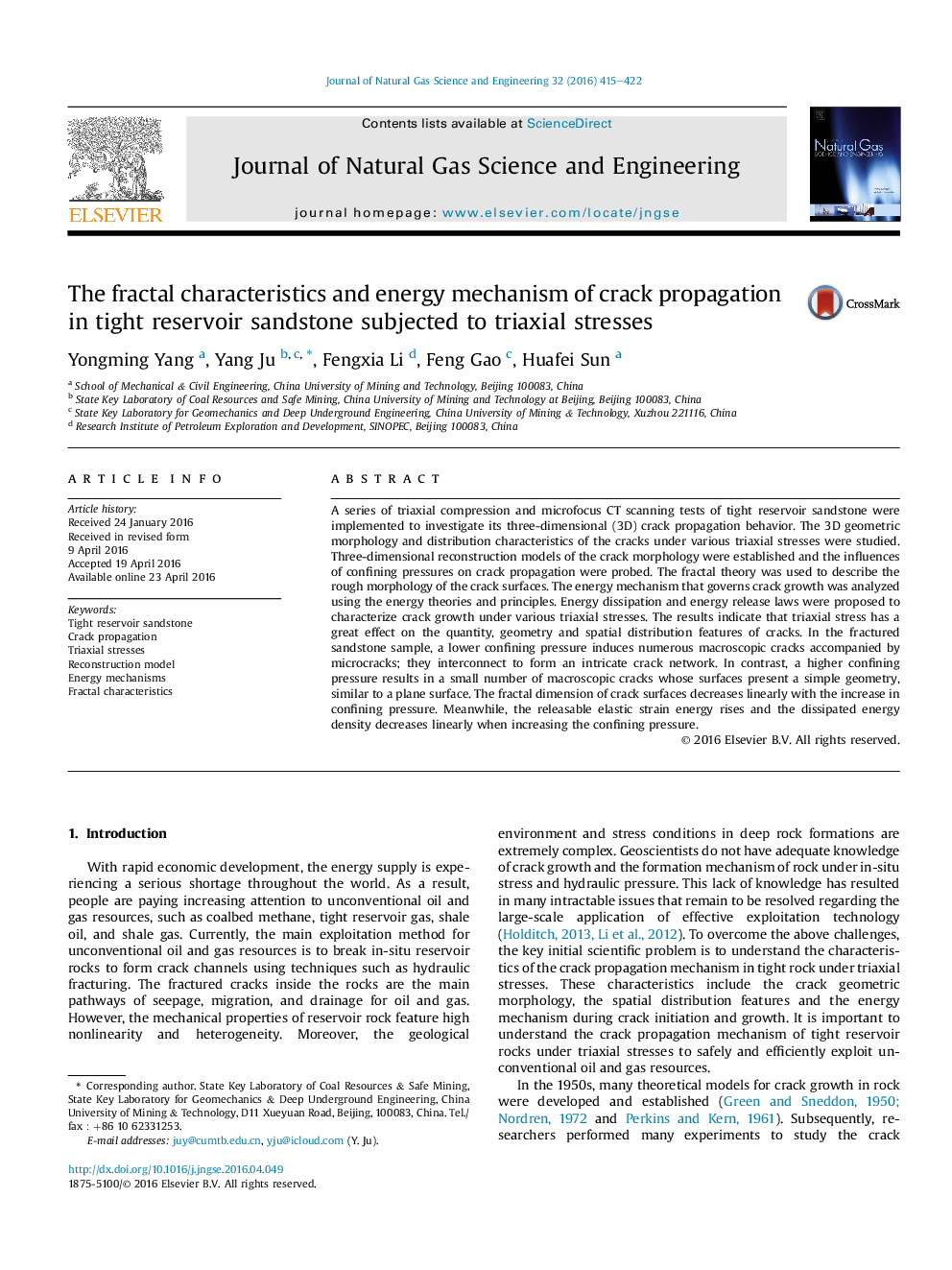| Article ID | Journal | Published Year | Pages | File Type |
|---|---|---|---|---|
| 1757243 | Journal of Natural Gas Science and Engineering | 2016 | 8 Pages |
•Triaxial compression and CT tests for crack growth in tight reservoir sandstone.•Reconstructed models for representing 3D fracture network.•Fractal description of 3D crack morphology.•Energy characteristics and mechanism for crack growth in tight sandstone.
A series of triaxial compression and microfocus CT scanning tests of tight reservoir sandstone were implemented to investigate its three-dimensional (3D) crack propagation behavior. The 3D geometric morphology and distribution characteristics of the cracks under various triaxial stresses were studied. Three-dimensional reconstruction models of the crack morphology were established and the influences of confining pressures on crack propagation were probed. The fractal theory was used to describe the rough morphology of the crack surfaces. The energy mechanism that governs crack growth was analyzed using the energy theories and principles. Energy dissipation and energy release laws were proposed to characterize crack growth under various triaxial stresses. The results indicate that triaxial stress has a great effect on the quantity, geometry and spatial distribution features of cracks. In the fractured sandstone sample, a lower confining pressure induces numerous macroscopic cracks accompanied by microcracks; they interconnect to form an intricate crack network. In contrast, a higher confining pressure results in a small number of macroscopic cracks whose surfaces present a simple geometry, similar to a plane surface. The fractal dimension of crack surfaces decreases linearly with the increase in confining pressure. Meanwhile, the releasable elastic strain energy rises and the dissipated energy density decreases linearly when increasing the confining pressure.
